Historia Civilis [HC] is a popular YouTuber who makes videos focused on ancient history. Historia Civilis is one of our personal favorite youtubers. The topic choice, research, and writing of his videos are always top notch. His most recent video on the history of work shares many of these good qualities, but ultimately his analysis presents a distorted view of the past and denies the progress that humanity has made since the industrial revolution.
The video has two main claims. First, that the industrial revolution upset a millenia-old relationship between humans and their work. This point is both true and important. The wages, tasks, status, inputs, and outputs of modern labor share little resemblance to labor in the past. HC correctly points out that most pre-industrial work was rural and agricultural. He has interesting and detailed schedules of medieval peasant laborers, and facts about how these routines changed with the introduction of clocks and electrical light.
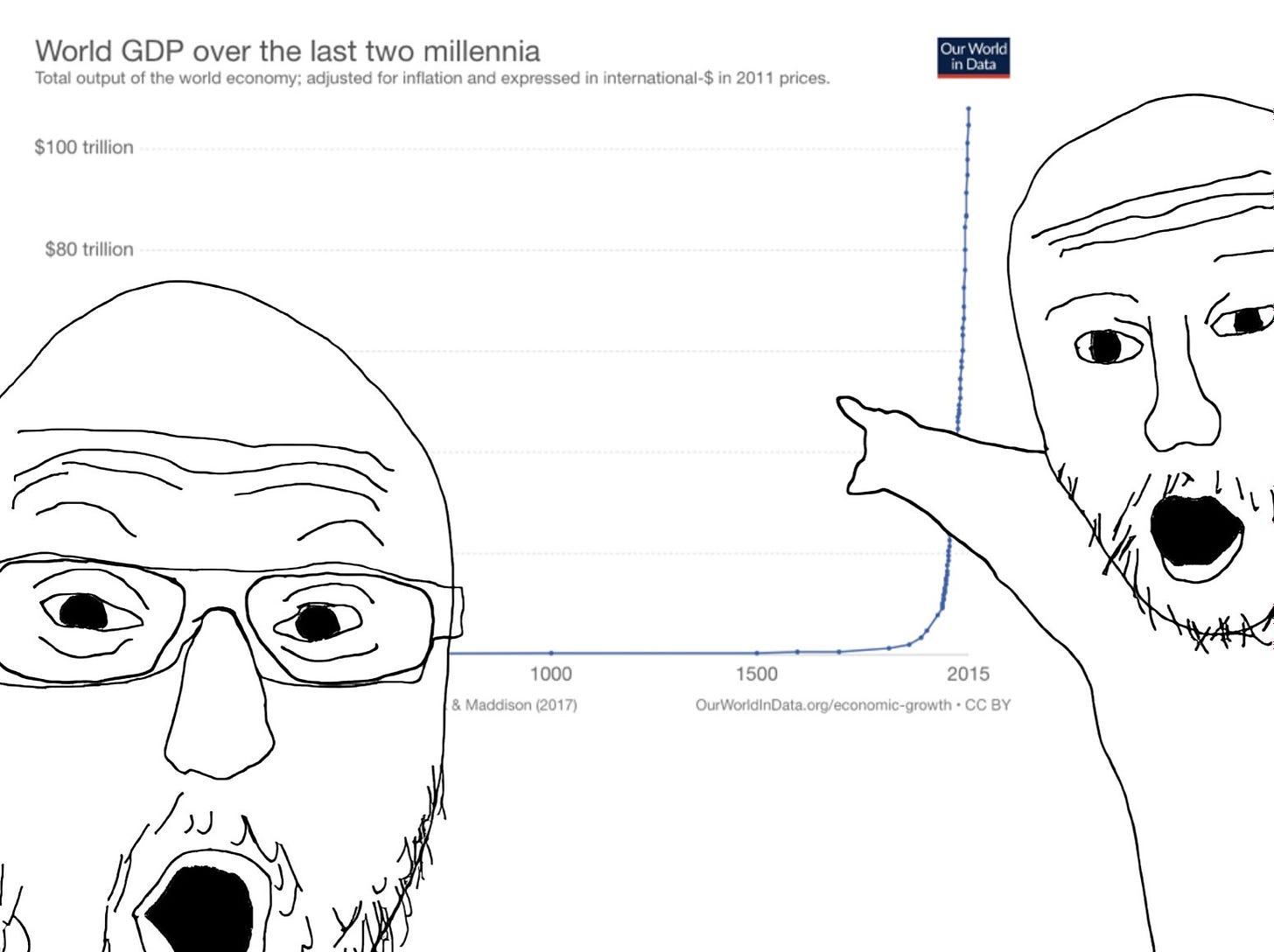
The video also makes the prescriptive claim that the pre-industrial labor system is better than the industrial one. HC does have evidence to support his value judgment. Most of this comes from a survey of the work schedules of medieval peasant farmers.
The Lives of Pre-Industrial Farmers
Here are the main points from HC's section medieval farm labor
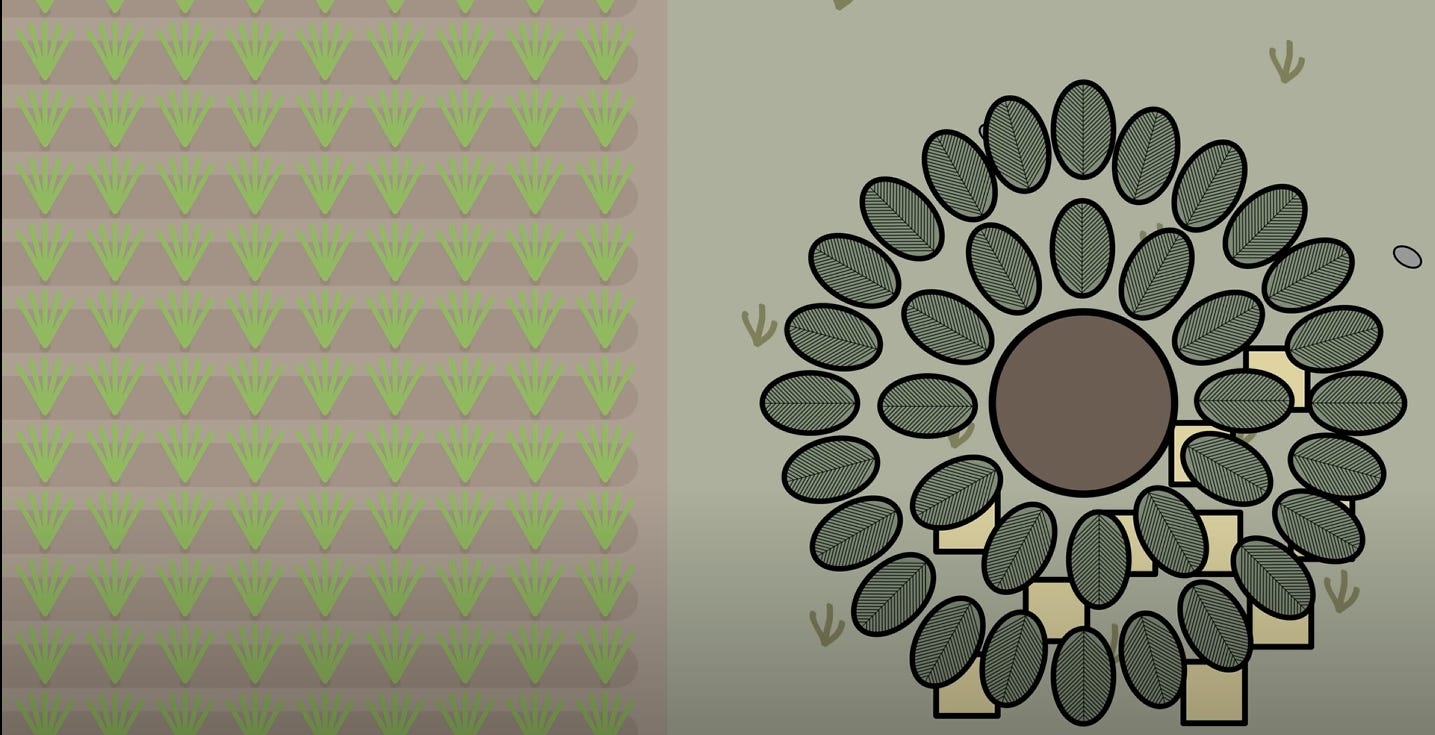
Workers did not have a strict to-the-minute schedule.
“For the first hour or so of the medieval workday, people would just trickle in at their own pace.”
“The employer was usually expected to provide some food to the workers, so for this time people usually had a chat and a bite to eat”
They would also have frequent breaks and were usually provided with food throughout the workday.
“After a couple of hours in the field, there would be a midmorning break that could range from 30-60 minutes, where workers would have another bite to eat.”
“Notice how the workers were constantly eating. That was one of the perks of being a day laborer. Food was a worker’s biggest expense, and so part of their compensation was that their employer would take care of the food for that day. It would be like if part of your compensation was that your boss paid your rent. It relieved a massive financial burden.”
Overall, the frequent breaks, long holidays, and seasonal slow downs in paid farm labor meant that medieval laborers worked fewer hours in wage labor than most modern workers.
“Workers might be in the fields for like 8 hours a day, but when you account for all of the breaks, they would only be working for 4-6 of those hours. During the busiest times of year they might be in the field for like 12 hours a day, but with the breaks they would only be working for 7-9 of those hours.”
“Researchers have found that Spanish farm labourers did not work for 42% of days in a year.”
“For a point of comparison, consider a modern worker working 5 days a week … In order for a modern worker to even begin to rival the amount of time off enjoyed by a medieval French farm labourer, that modern worker would need to be provided with 3.5 months of vacation per year. Plus weekends, plus public holidays. Medieval workers were operating on a level so far beyond us, it’s difficult for us to even dream that big!”
Free food, lots of breaks, lots of holidays, it all sounds great. HC aligns all of this evidence to the same task: supporting the value judgment that pre-industrial work was better than what would come next and what we have today. There are three huge problems with his evidence and analysis though.
Ignoring Torture
HC only considers the quality of life and work for a medieval peasant in normal times.
“Work used to be a lot more informal and a lot more casual. Labour and leisure used to be intermingled. One was expected to relax or even nap on the job. Work was a part of a worker’s life. Kicking back and passing the time wasn’t just something workers did at home, it was equally something they did at work. Unless there was some sort of unusual crisis, workers were not expected to experience great stress while working.”
His characterization of how nice and relaxing the normal lives of medieval peasants were seems wrong to us (we get into this in later sections) but setting that aside, everyone in the medieval world was frequently faced with “unusual crises.” Even a bucolic paradise turns sour when every few years it is thrown into famine by crop disease or bad weather, invaded by foreign armies, and ravaged by deadly plagues.
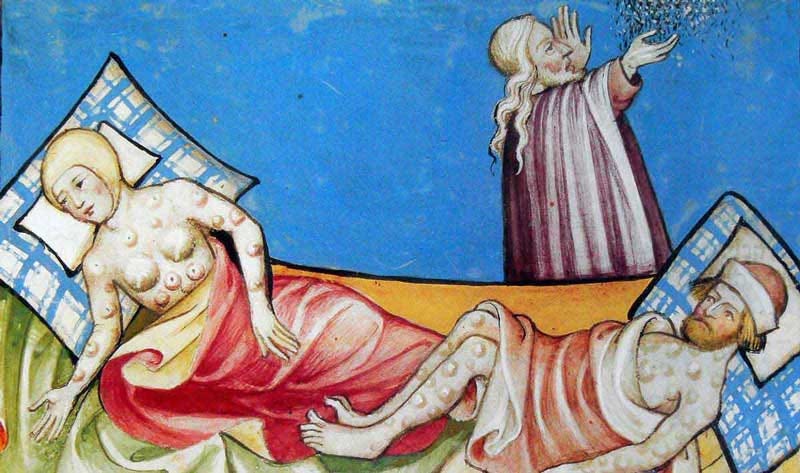
Nearly everyone who lived before the industrial revolution would experience a failed harvest and watch their most vulnerable family members and friends starve to death. If not famine, then plagues which returned to each new generation would serve the same purpose. Accompanying these were the far more routine tragedies of death in childbirth and infancy. Shrugging off these terrible events as rare aberrations of an otherwise idyllic lifestyle is misinformed and disrespectful to the people who endured them. Even if workers did not experience great stress while working in normal times, painful and deadly crises were commonplace in the past.
Beyond these cruel acts of god, medieval workers were subject to the whims of their landlord who could torture them without recourse. Here is a primary source account of a harsh lord.
“If, as was customary, a slave held a burning candle before him at dinner, he caused his shins to be bared, and placed the candle between them until the flame died; and he caused the same thing to be done with a second candle until the shins of the torchbearer were burned. But if the slave tried to cry out, or to move from one place to another, a naked sword threatened him; and he found great enjoyment in the man's tears.”
In plain english, the slave had his shins scraped raw and then burned. If he tried to run or scream he would be slashed to death with a sword and his lord laughed while it happened.
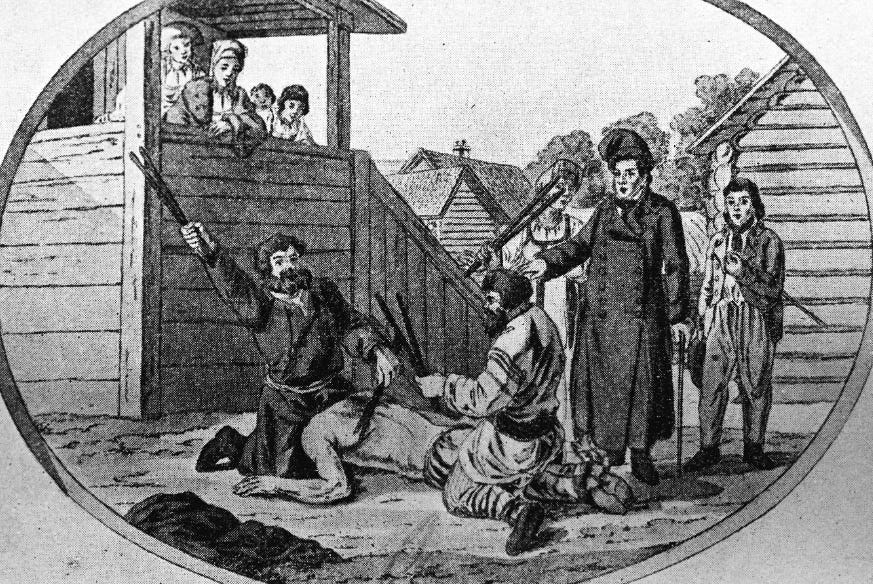
Serf Punished with Cudgels in the Presence of the Landlord's Family and Servants," a print by Christian Geissler. Late 18th century
The contemporary institutions of justice did not protect peasants from their landlords, and served instead to reinforce their subservient position in the medieval social order. Serfs and Peasants who violated the strict social hierarchy of European medieval societies were commonly subject to capital punishment, with little to no semblance of due process. When the law was enforced, it often involved tortuous ordeals of bodily harm.
“In medieval England, for example, an individual accused of committing an offense faced one of three trials by ordeal:
1. Ordeal by fire: The person accused of committing a crime was forced to hold a scalding hot iron bar and walk with it three or four paces. His burnt hands were then bandaged for three days, after which he returned to the court, where the bandages were removed. If the wounds were clearly healing, the accused would be considered innocent, and if the wounds had remained the same, the accused was found guilty.
2. Ordeal by water: The person accused was tied up by his arms and legs and thrown into the water. If he sank he was considered innocent, and if he floated he was deemed guilty.
3. Ordeal by combat: This ordeal was typically used by noblemen accused of committing a crime. The accuser would fight the accused and the winner was considered to be in the right, while the loser, if fortunate enough to survive, was considered in the wrong.”
Historia Civilis doesn’t talk much about the relationships between peasant workers and their landlords except to praise how much food and time off the landlords gave their serfs. But he does spend a lot of time talking about the relationship between industrial capitalists and their workers. Here is a representative excerpt:
“In 1664, some absolutely psychotic capitalist named Richard Palmer, cursèd be his name, paid the church in the town of Wokingham, England to ring their bell at precisely 4 o’clock every morning and at precisely 8 o’clock every evening. He did this because he was still seeing the cultural evidence of “winter wages,” where workers woke up later during the slow winter months and worked half as hard as they normally did. As a capitalist, this drove Palmer crazy. He felt that it was deeply important for workers to be up 4 hours before sunrise every day, even if they didn’t really have any work to do. If they didn’t want to wake up on their own, he would do it for them. So he had the church bell ring at 4 o’clock every morning, 4 hours before sunrise.”
Historia Civilis was not pulling punches when he selected evidence of bad behavior by industrial capitalists. But setting the town bells to ring earlier in the morning seems tame compared to the wrath of a vindictive feudal lord or suffering through a famine or plague.
Quality Adjusted Work and Leisure Hours
The second problem with HC’s evidence is that he only compares pre-industrial and modern workers based on the number of hours or days that they work, but an hour of strenuous outdoor field work is not the same as working an hour in a modern-day office. In fact, I don’t think there are any reasonably common jobs in 21st century America which are as grueling and unpleasant as peasant farming in the 16th century. HC avoids any description of the actual tasks that medieval laborers needed to do, but here is a primary source account
Master: What sayest thou plowman? How do you do your work?
Plowman: O my lord, I work very hard: I go out at dawn, driving the cattle to the field, and I yoke them to the plow. Nor is the weather so bad in winter that I dare to stay at home, for fear of my lord: but when the oxen are yoked, and the plowshare and coulter attached to the plow, I must plow one whole field a day, or more.
Master: Have you any assistant?
Plowman: I have a boy to drive the oxen with a goad, and he too is hoarse with cold and shouting.
Master: What more do you do in a day?
Plowman: Certainly I do more. I must fill the manger of the oxen with hay, and water them and carry out the dung.
Master: Indeed, that is a great labor.
Even if HC is right that medieval peasants worked fewer hours than modern workers, each hour was much more taxing, so it isn’t enough to compare their hours and conclude that whoever had the smaller number had a better deal.
There is a similar quality adjusting argument for the leisure time that serfs did have. An hour of leisure as a 16th century peasant has little to offer compared to an hour of leisure today. Access to books and literacy were exceedingly rare. Almost none of the endless pleasures available to modern workers (including the high quality historical content produced by Historia Civilis) have any match in the pre-industrial world.
Mischaracterization of Work vs Leisure
Historia Civilis would likely concede that the suffering from each hour of medieval field labor is greater, and that each hour of leisure was worse, than what is available to modern American workers. But he could still claim that because they worked so little, they have a better deal overall. This brings us to the third problem with his evidence: HC’s schedule of medieval peasant working hours concerns only the work that they traded for wages with their landlord.
Serfs frequently owned or rented smaller family plots and livestock that they had to tend to after the “work day” was over. HC may be right that serfs only worked on the fields of their landlords for 6 hours a day and only on half the days of the year, but that is far from the only field work they did. The early mornings and late afternoons before and after farmers plowed their landlord’s field were not filled with leisure but rather with more subsistence farming on personal plots of land.
Beyond this extra farming work, the “leisure” hours of a medieval laborer were filled with strenuous household chores. Chopping wood, fetching water, milling grain, and as mentioned in the video “Home repairs, building new furniture, and patching up or making new clothing.” Just because these hours of labor were not paid for by a landlord, does not imply they should be considered leisure time.
Conversely, much of what is counted as “labor” for modern workers is far from the typical intensity of medieval labor. Between surfing the internet, coffee chat, and water cooler pow-wows, modern workers waste as much as 3 hours per 8 hour work day. The working hours of modern professionals are often less strenuous than the “leisure time” of medieval serfs.
These comparisons are all between medieval serfs and modern professionals of working age, but there are also big differences in work over the life cycle of a person from childhood to retirement. Medieval children rarely went to school and started hard labor as early as age 8. Modern children often don’t start full time work until they graduate college at 22. Medieval workers also did not have retirement in any sense we would recognize. Peasants worked until they were physically incapacitated and rarely lived long after that. Modern workers usually have 10-20 years of healthy life after 65 with no work obligations. There were far fewer silver-haired golfers in the past!
HC claims that
“In order for a modern worker to even begin to rival the amount of time off enjoyed by a medieval French farm labourer, that modern worker would need to be provided with 3.5 months of vacation per year. Plus weekends, plus public holidays. Medieval workers were operating on a level so far beyond us, it’s difficult for us to even dream that big”
But this analysis flips far in the favor of modern workers if you account for the 30+ years of extra leisure time that modern workers have on either end of their working age.
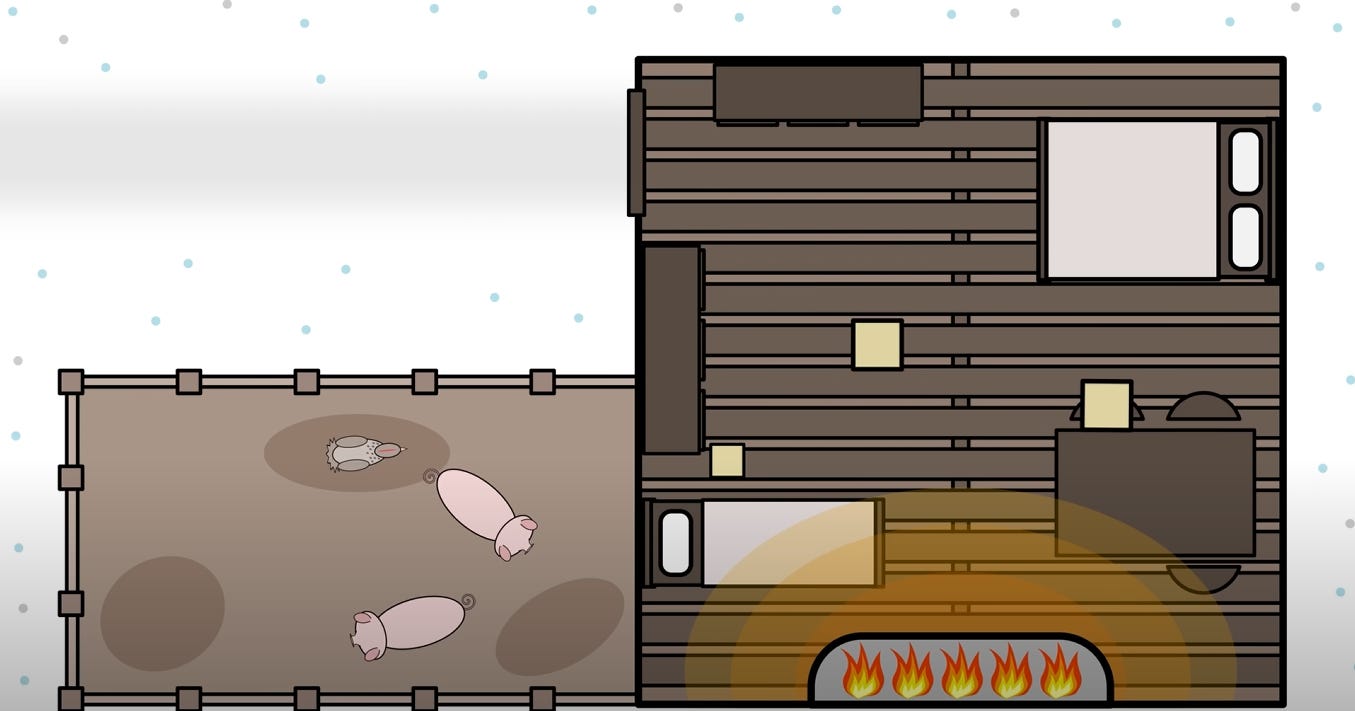
We both enjoy Historia Civilis’ videos but the departure from his usual topic coincides with a departure from his usual rigor. The quality of life for medieval peasants was made much worse by their frequent exposure to torture and painful early deaths. HC doesn’t make an apples-to-apples comparison between modern and medieval work hours, nor does he recognize the superiority of modern leisure. Grueling field work and household chores made the normal medieval work day longer and harder than HC represents, and industrial society has afforded us longer childhoods, better retirements, and longer life spans.
The video discounts the progress we’ve made and the forces that drove it. It is motivated by a widespread prejudice against industrial civilization which leads people to make arguments for what they want to be true rather than what is. Industrial labor and modern society have big problems that are worth solving. But if the only vision for a better world is a return to the past, then the case against industrial society is weak. We owe it to the generations before us who spent their lives carving out small advances in quality of life to continue their tradition of progress.

Nice piece, thanks. I hadn't noticed HC's latest video, but am also a fan so look forward to watching the full thing.
An initial thought, though: there seem at least a couple of places where one can grant his facts yet argue his interpretation of these as "good" is backwards.
For instance, one can argue that lower preindustrial working hours reflect chronic underemployment and unemployment, one of that society's chief problems, and that industrialisation alleviated this problem (and even that this was one of the great initial benefits of industrialisation).
And HC's following point ought to be seen as evidence against the superiority of preindustrial life:
Essentially he's just pointed out that living standards were so low that the majority of budgets had to be spent just on food.
Those many free days the workers had came as a courtesy of Catholicism. Look up the amount of regulation and holidays they had. This was, in fact, one of the reasons why Protestants were so comparatively successful. It was also part of the reason why they were resented in Catholic-majority countries; they got richer and were doctrinally snobbish about it. But I guess attacking Protestantism in favor of medical Caholocism would probably be the wrong sort of spicy for this YouTuber.
Regarding the structure of the workday. Modern-day physical labor still looks like this in many cases. Having worked over the summer in Landscaping and Carpentry this schedule is still present. And OP mentioned the case of office Jobs already.